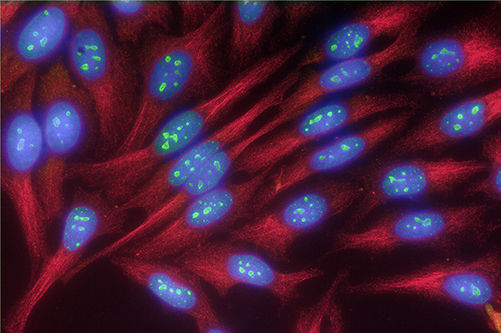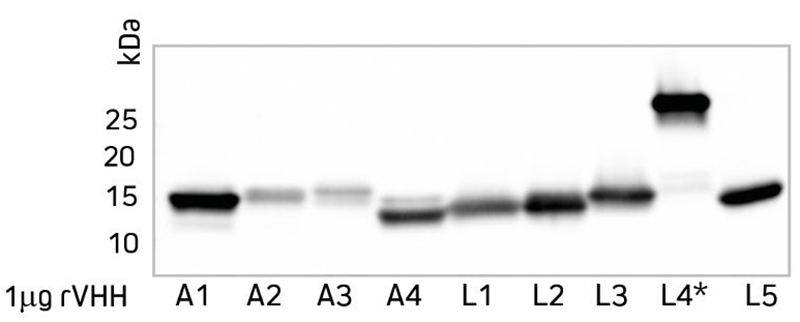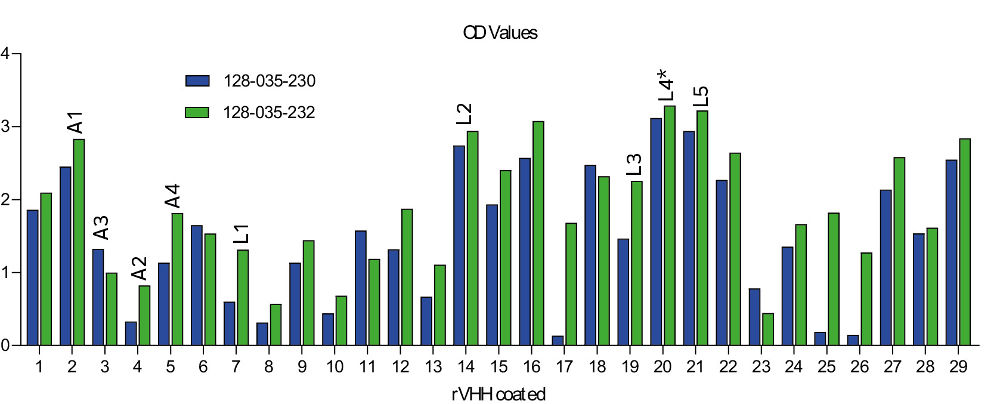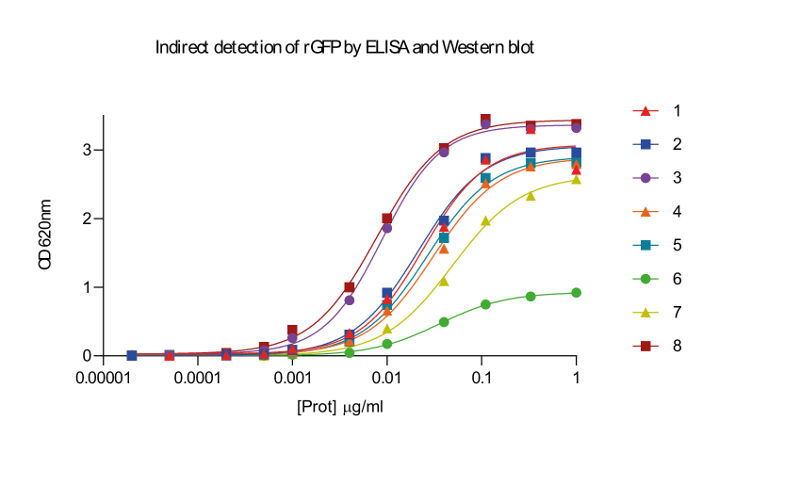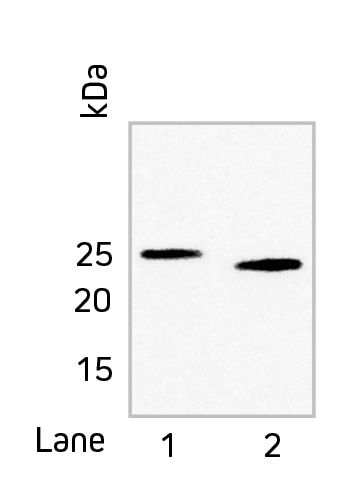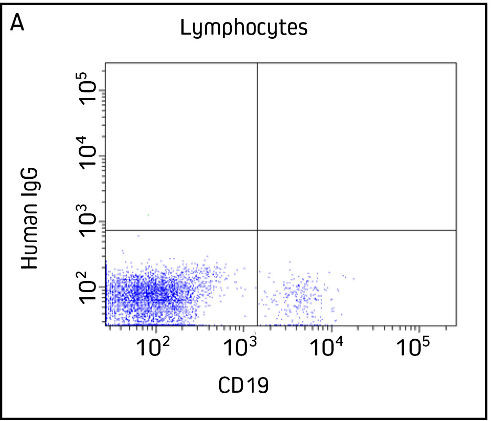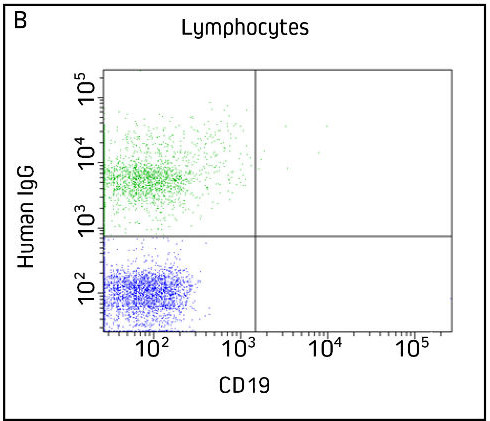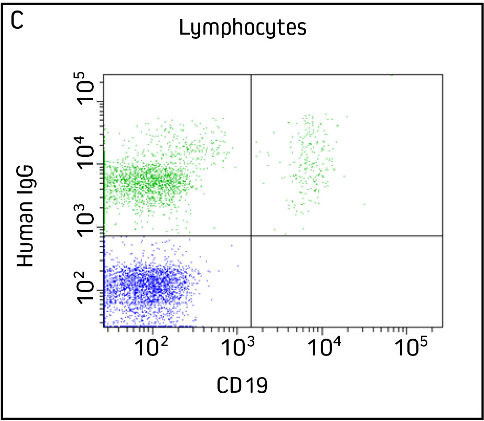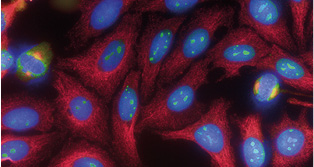| Product Description |
Product Code |
Product Description |
Product Code |
| AffiniPure Goat Anti-Alpaca IgG, VHH domain (min X Bov Sr Prot) |
128-005-232 |
Peroxidase AffiniPure Goat Anti-Alpaca IgG, VHH domain (min X Bov Sr Prot) |
128-035-232 |
| AffiniPure Fab Fragment Goat Anti-Alpaca IgG, VHH domain (min X Bov Sr Prot) |
128-007-232 |
Peroxidase AffiniPure Goat Anti-Alpaca IgG, VHH domain (min X Bov, Hu, Ms, Rb, Rat Sr Prot) |
128-035-230 |
| AffiniPure Fab Fragment Goat Anti-Alpaca IgG, VHH domain (min X Bov, Hu, Ms, Rb, Rat Sr Prot) |
128-007-230 |
Alkaline Phosphatase AffiniPure Goat Anti-Alpaca IgG, VHH domain (min X Bov Sr Prot) |
128-055-232 |
| AffiniPure Goat Anti-Alpaca IgG, VHH domain (min X Bov, Hu, Ms, Rb, Rat Sr Prot) |
128-005-230 |
Alkaline Phosphatase AffiniPure Goat Anti-Alpaca IgG, VHH domain (min X Bov, Hu, Ms, Rb, Rat Sr Prot) |
128-055-230 |
| Biotin-SP (long spacer) AffiniPure Fab Fragment Goat Anti-Alpaca IgG, VHH domain (min X Bov Sr Prot) |
128-067-232 |
DyLight™ 405 AffiniPure Goat Anti-Alpaca IgG, VHH domain (min X Bov Sr Prot) |
128-475-232 |
| Biotin-SP (long spacer) AffiniPure Goat Anti-Alpaca IgG, VHH domain (min X Bov Sr Prot) |
128-065-232 |
DyLight™ 405 AffiniPure Fab Fragment Goat Anti-Alpaca IgG, VHH domain (min X Bov Sr Prot) |
128-477-232 |
| Biotin-SP (long spacer) AffiniPure Goat Anti-Alpaca IgG, VHH domain (min X Bov, Hu, Ms, Rb, Rat Sr Prot) |
128-065-230 |
DyLight™ 405 AffiniPure Goat Anti-Alpaca IgG, VHH domain (min X Bov, Hu, Ms, Rb, Rat Sr Prot) |
128-475-230 |
| Biotin-SP (long spacer) AffiniPure Fab Fragment Goat Anti-Alpaca IgG, VHH domain (min X Bov, Hu, Ms, Rb, Rat Sr Prot) |
128-067-230 |
DyLight™ 405 AffiniPure Fab Fragment Goat Anti-Alpaca IgG, VHH domain (min X Bov, Hu, Ms, Rb, Rat Sr Prot) |
128-477-230 |
| Alexa Fluor® 488 AffiniPure Fab Fragment Goat Anti-Alpaca IgG, VHH domain (min X Bov Sr Prot) |
128-547-232 |
Fluorescein (FITC) AffiniPure Goat Anti-Alpaca IgG, VHH domain (min X Bov Sr Prot) |
128-095-232 |
| Alexa Fluor® 488 AffiniPure Goat Anti-Alpaca IgG, VHH domain (min X Bov Sr Prot) |
128-545-232 |
Fluorescein (FITC) AffiniPure Goat Anti-Alpaca IgG, VHH domain (min X Bov, Hu, Ms, Rb, Rat Sr Prot) |
128-095-230 |
| Alexa Fluor® 488 AffiniPure Fab Fragment Goat Anti-Alpaca IgG, VHH domain (min X Bov, Hu, Ms, Rb, Rat Sr Prot) |
128-547-230 |
R-Phycoerythrin AffiniPure Goat Anti-Alpaca IgG, VHH domain (min X Bov Sr Prot) |
128-115-232 |
| Alexa Fluor® 488 AffiniPure Goat Anti-Alpaca IgG, VHH domain (min X Bov, Hu, Ms, Rb, Rat Sr Prot) |
128-545-230 |
R-Phycoerythrin AffiniPure Goat Anti-Alpaca IgG, VHH domain (min X Bov, Hu, Ms, Rb, Rat Sr Prot) |
128-115-230 |
| Cy™3 AffiniPure Fab Fragment Goat Anti-Alpaca IgG, VHH domain (min X Bov Sr Prot) |
128-167-232 |
Rhodamine Red™-X (RRX) AffiniPure Fab Fragment Goat Anti-Alpaca IgG, VHH domain (min X Bov Sr Prot) |
128-297-232 |
| Cy™3 AffiniPure Goat Anti-Alpaca IgG, VHH domain (min X Bov Sr Prot) |
128-165-232 |
Rhodamine Red™-X (RRX) AffiniPure Goat Anti-Alpaca IgG, VHH domain (min X Bov Sr Prot) |
128-295-232 |
| Cy™3 AffiniPure Goat Anti-Alpaca IgG, VHH domain (min X Bov, Hu, Ms, Rb, Rat Sr Prot) |
128-165-230 |
Rhodamine Red™-X (RRX) AffiniPure Fab Fragment Goat Anti-Alpaca IgG, VHH domain (min X Bov, Hu, Ms, Rb, Rat Sr Prot) |
128-297-230 |
| Cy™3 AffiniPure Fab Fragment Goat Anti-Alpaca IgG, VHH domain (min X Bov, Hu, Ms, Rb, Rat Sr Prot) |
128-167-230 |
Rhodamine Red™-X (RRX) AffiniPure Goat Anti-Alpaca IgG, VHH domain (min X Bov, Hu, Ms, Rb, Rat Sr Prot) |
128-295-230 |
| Alexa Fluor® 594 AffiniPure Fab Fragment Goat Anti-Alpaca IgG, VHH domain (min X Bov Sr Prot) |
128-587-232 |
Alexa Fluor® 647 AffiniPure Goat Anti-Alpaca IgG, VHH domain (min X Bov Sr Prot) |
128-605-232 |
| Alexa Fluor® 594 AffiniPure Goat Anti-Alpaca IgG, VHH domain (min X Bov Sr Prot) |
128-585-232 |
Alexa Fluor® 647 AffiniPure Fab Fragment Goat Anti-Alpaca IgG, VHH domain (min X Bov Sr Prot) |
128-607-232 |
| Alexa Fluor® 594 AffiniPure Goat Anti-Alpaca IgG, VHH domain (min X Bov, Hu, Ms, Rb, Rat Sr Prot) |
128-585-230 |
Alexa Fluor® 647 AffiniPure Goat Anti-Alpaca IgG, VHH domain (min X Bov, Hu, Ms, Rb, Rat Sr Prot) |
128-605-230 |
| Alexa Fluor® 594 AffiniPure Fab Fragment Goat Anti-Alpaca IgG, VHH domain (min X Bov, Hu, Ms, Rb, Rat Sr Prot) |
128-587-230 |
Alexa Fluor® 647 AffiniPure Fab Fragment Goat Anti-Alpaca IgG, VHH domain (min X Bov, Hu, Ms, Rb, Rat Sr Prot) |
128-607-230 |
| Cy™5 AffiniPure Goat Anti-Alpaca IgG, VHH domain (min X Bov Sr Prot) |
128-175-232 |
Alexa Fluor® 680 AffiniPure Goat Anti-Alpaca IgG, VHH domain (min X Bov, Hu, Ms, Rb, Rat Sr Prot) |
128-625-230 |
| Cy™5 AffiniPure Goat Anti-Alpaca IgG, VHH domain (min X Bov, Hu, Ms, Rb, Rat Sr Prot) |
128-175-230 |
Alexa Fluor® 790 AffiniPure Goat Anti-Alpaca IgG, VHH domain (min X Bov Sr Prot) |
128-655-232 |
| Alexa Fluor® 680 AffiniPure Goat Anti-Alpaca IgG, VHH domain (min X Bov Sr Prot) |
128-625-232 |
Alexa Fluor® 790 AffiniPure Goat Anti-Alpaca IgG, VHH domain (min X Bov, Hu, Ms, Rb, Rat Sr Prot) |
128-655-230 |

